The Vortex Parallel Rifts® Megaverse®
Crusader Body Armour
Or Crusader armour as it should have been!
And considerations necessary for all Environmental Armour

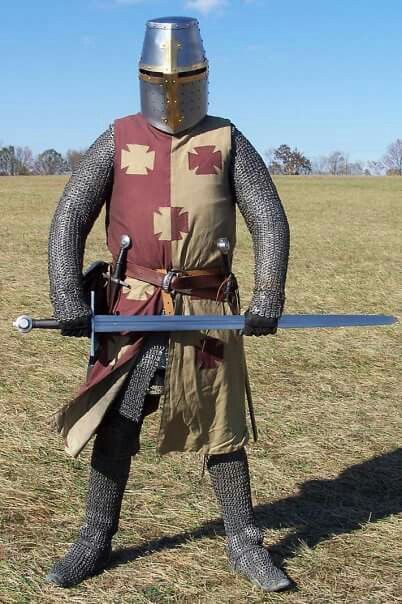
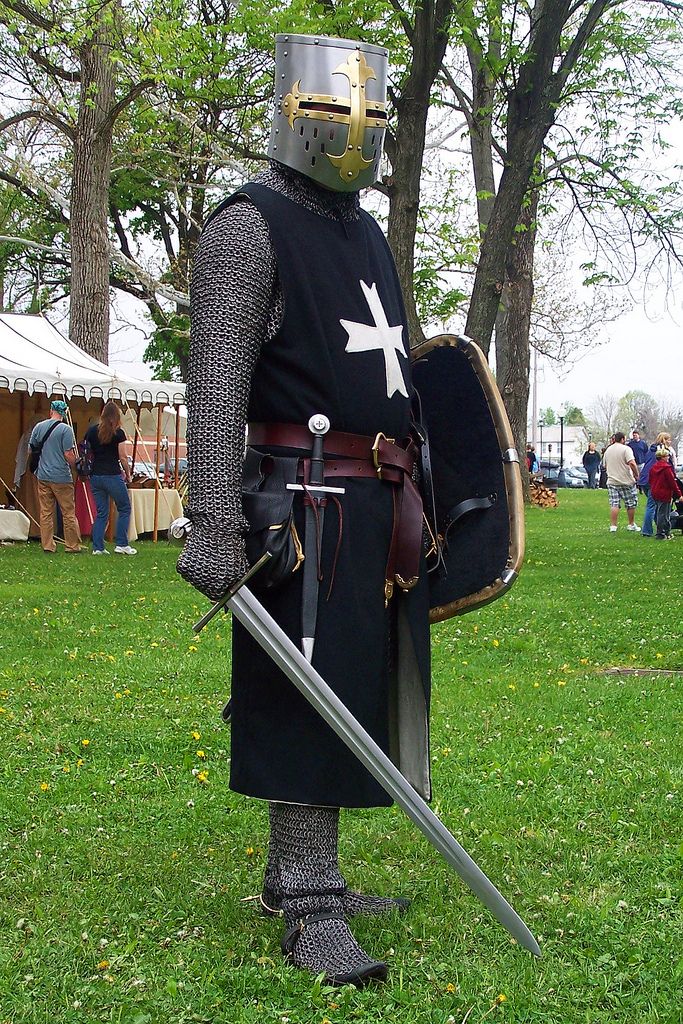
Historical Context and High Tech
When the original Rifts rules were released the picture for the Crusader environmental armour was missing. The description indicated that it was based on Medieval Crusader Knights armour.
Recently, I've found a depiction of supposed "Crusader" armour,shown left, but this bear no resemblence what so ever to any form of "Crusader" armour, vis any form of armour worn by any "knight" during any of the "Crusades".
So why does this page start with 3 pictures of men in Chainmail Armour?
The answer is actually very simple, they all depict "Crusader" Knights.
The picture top left, is a pair of late Norman period Knights, circa 1060->1080, i.e the sort of armoured knight that would have gone on the first Crusade.
The two pictures top centre and top right are late Crusader knights circa 1150->1170, one with a Templar tabbard and one with a "house" design.
Where does this leave the Rifts Crusader armour.. well back on the drawing board. Unfortuantely I'm not an artist so I'll have to describe what I think the Crusader armour should look like and why..
Before looking at a futuristic version, we need to consider the
construction of the original armour.
Typically this armour is made up of 5 pieces, a padded under layer or
gambeson (think of it as a padded long sleeved jumper), the outer
hauberk (knee length mail tunic), 2 leggings, each a seperate piece
attached to a belt at the waist, and lastly the helmet.
The mail armour may be augmented, although it wasn't common by
vambraces, arm guards that add additional protection to the lower arm
(left figure top left), and/or greaves, leg guards that add additional
protection to the lower leg(again left figure top left).
The long length of the hauberk, split front and rear, both provides
protection for the legs when riding, and allows the armour to be worn
when riding.
Making a high tech version of this armour, isn't that difficult. "Butchers mail" is made today from stainless steel, and is mass produced to provide hand and body protection to workers in slaughter houses. Taking this forward a few years, to make it from a ceramic polymer, of the same sort used in all the other forms of body armour, wouldn't be that difficult, and the "Padded Man" armour already provides the basis for the gambeson, but none of this is inherently "Environmental" armour.
Considerations for Enviromental armour
If we look for current tech equivalents of "enviromental" armour
then there are 2 clear cases, Space Suits, and Deep Sea Diving Suits.
If we consider these then currently, the only element both have in
common is removable helmets, which are fitted to the main body of the
suit by a sealing/locking ring on the collar of the suit and the base
of the helmet.
This provides a good model for all enviromental armour, helmets lock to the body of the suit by a sealing/locking ring. Whilst certain manufacturers may want to make these propriety, like the Coalition, others may want to make them Universal, or at least provide adaptor rings to allow different helmets to be used with different suits of armour, and you can bet there will be adaptor rings that allow Coalition helmets to be used with other manufactures armour and vice versa.
The modern space suit also provides a good model from a couple of more perspectives, it has two halves to the suit, the upper half equivalent to a short hauberk, and the lower half equivalent to a pair of trousers. It also has removable gloves, again with sealing/locking rings at the wrist.
From a high tech environmental armour perspective we would want to take this a stage further and have sealing/locking rings just above the ankle, allowing inter-changeable/replacable boots
Spacesuits also have thermal regulation capabilities and oxygen supply and monitoring, another feature of environmental armour, but these require power to operate. I've covered this elsewhere in my "In Cold Pursuit" article, so I'm not going to repeat this here.
Applying all this to Crusader Armour
To construct our "high tech" Crudaser armour, at least in it's base form we just have to put all the elements together, starting with a padded underlayer, a bit like a long sleeve body-warmer or padded jacket. Bonded to this is a collar plate, which sits on the shoulders, and extends to level with the bottom of the shoulder blades at the back, and curves around the front, allowing enough room for the wearers head to go through unimpeded. The collar plate also provides the sealing/coupling mechanism for the helmet, remembering that all environmental armour has a HUD display for its data readouts.
Bonded to the bottom of the bottom of the padded body section, at
what would be the wearers waist, is a 2" wide adjustable belt section.
The adjustment is not significant allowing adjustment by +/- 2" from
the nominal waist size.
Between the Collar plate and the belt is a layer of 1.6mm x 5mm link
ceramic polymer alloy mail, which is bonded to both pieces forming the
upper part of the hauberk.
Bonded to the bottom of the belt, is a skirt, split front and rear, half way between the crotch and the knees, of fibre polymer mesh, which forms the substrate for the 1.6mm x 5mm link ceramic polymer alloy mail which is bonded to it forming the lower section of the hauberk
Completing the hauberk, are full length 1.6mm x 5mm link ceramic polymer alloy mail sleeves which end at the wrist in adjustable +/- 0.5" by 1" wide solid locking/sealing/coupling rings.
The same form of padded underlayer is used for the trousers, the
waistband of which is a similar sized adjustable sealing/locking ring,
to that found on the Hauberk, allowing the two to lock together,
forming and environmentally sealed unit.
Similar to the sleeves, the legs of the trousers end in adjustable +/-
0.5" by 1" wide solid locking/sealing/coupling rings.
Note:The
electronic control
unit and Eclip
housing is on the back left hand side just above the belt, whilst the
thermal regulation unit is on the right hand side (as viewed from the
rear, or when worn). This allows a right
handed person to swap the Eclip when required with minimal fuss. Both
units are about 5" square and 1.5" thick. Placing the units in these
position makes them less susceptable to damage in combat.
Completing the basic armour, are a pair of 1.6mm x 5mm link ceramic polymer alloy mailmail backed mittens, and a pair of solid "plate mail" style ceramic alloy ankle boots, which when fastened, couple to the rings of the trouser legs.
Enhancing the Basic Crusader Armour
The other 2 pictures on the right show how the armour evolved during
the 13th and 14th centuries, eventually becoming what is loosely
refered to a "Full Plate Mail" or more often just as "Plate Mail".
The first step in this evolution, skipping for the moment the arm and
leg guards, was the advent of the Curiass, sometimes refered to as a
"back and brest".
The three pictures along the bottom are all different forms of Curiass,
with the one on the right being the later evolution sometimes available
to "pikemen".
The most common form of high tech Curiass is the one on the left, except it doesn't require any of the straps joining the front and rear pieces, it just requires that the collar plate, hauberk belt, and control units are augmented with locking plates, which allow the curiass to lock to the basic armour. This simple addition increases the DC of the main body by 40%
Beyond the addition of a Curiass there are 5 additional enancements that can be applied to the armour
- "Plate" Gauntlets (Gloves with Fingers - See bottom right)
- "Plate" Vambraces (Lower Arm guards - See bottom left)
- "Plate" Greaves (Lower Leg guards - See lower mid-row left)
- "Plate" Cuisses(Upper Leg guards - see lower mid-row right)
- "Plate" Poleyn (Knee Guards - see lower mid-row)
Greaves always encase the lower leg (as per Riddick in the 3rd film) and are self-securing, whilst Cuisses are attached to the sides of the upper section of the trousers via additional locking plates added into the trousers.
Poleyn when supplied attached to either Greaves or Cuisses require a strap to attach the armour to the leg behind the knee, but when a complete set of leg protection Guisses+Poleyn+Greaves is supplied as 1 piece the armour is secured by a combination of the Greaves and Cuisses, so no additional fixing is required for the Poleyn.
Vambraces are similar to Greaves, in that they encase the lower arm and are self-securing. Gauntlets typically also include a "Cuff" which serves as additional protection for the locking ring at the wrist.
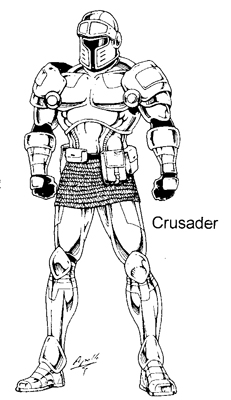
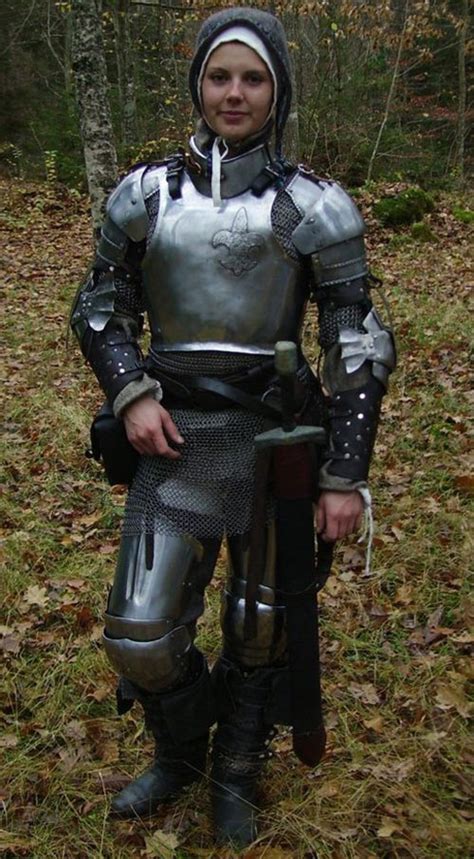

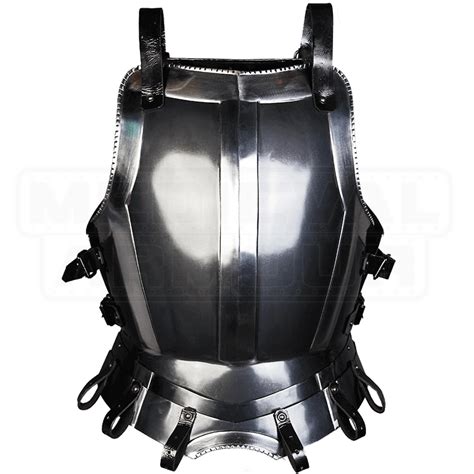
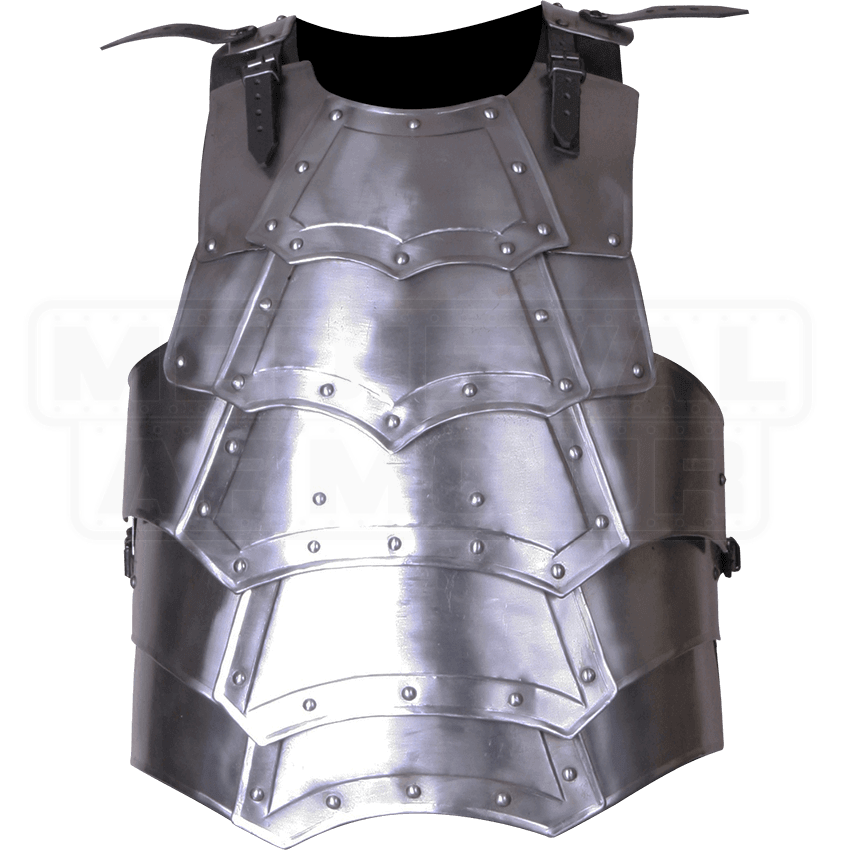

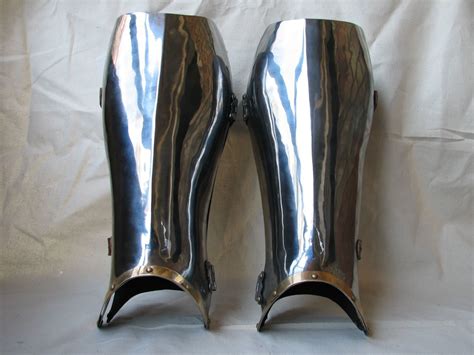
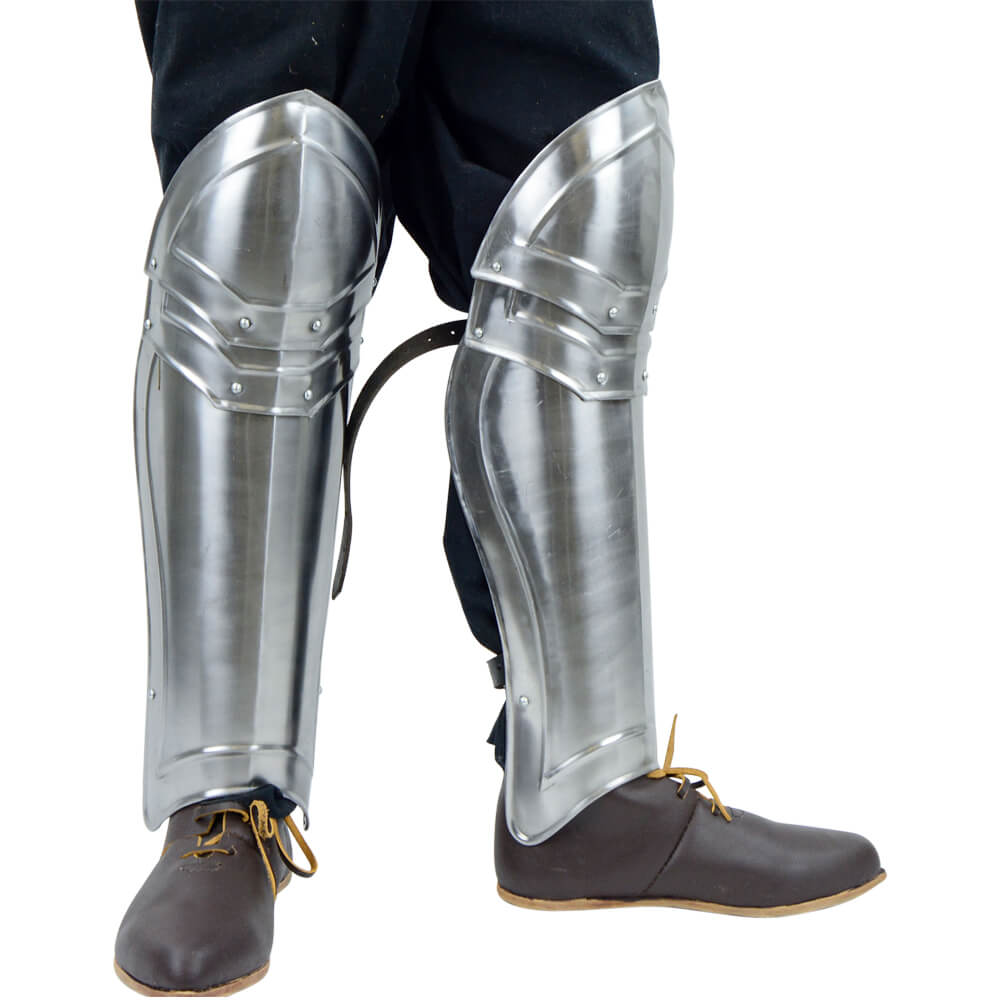
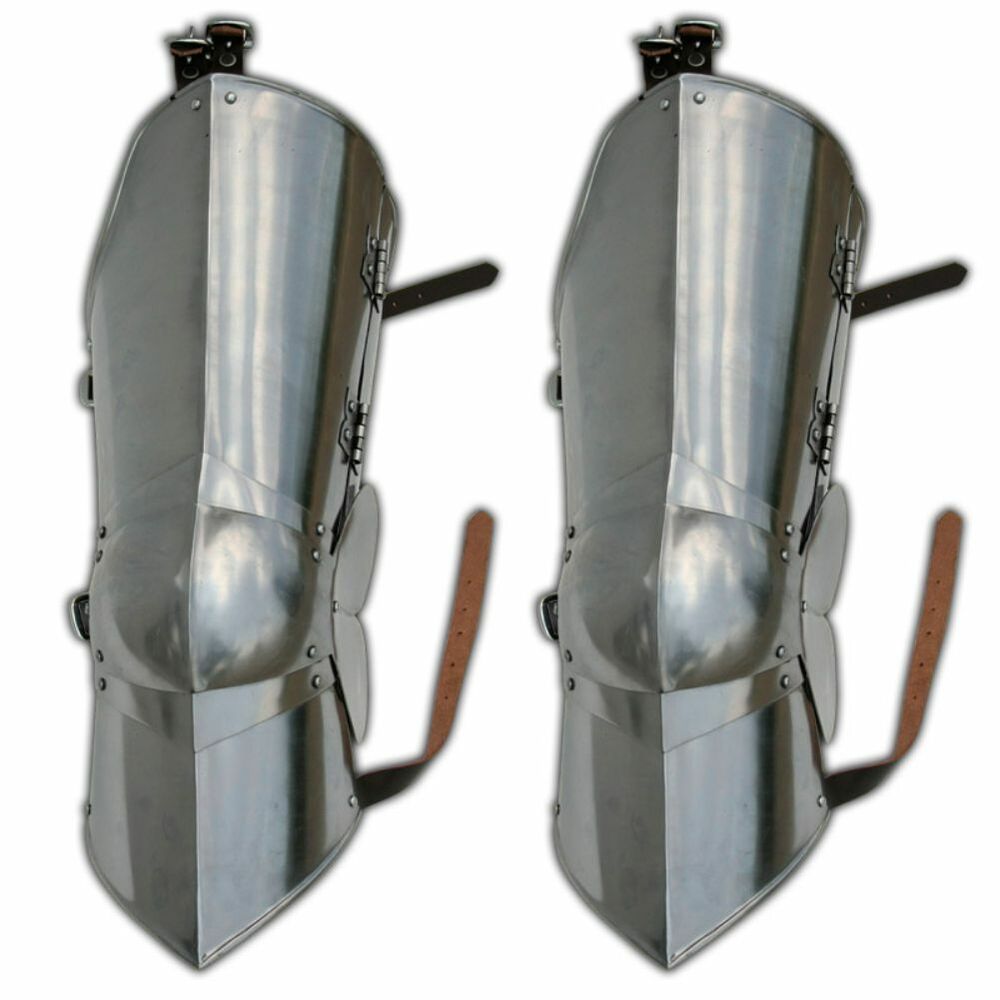
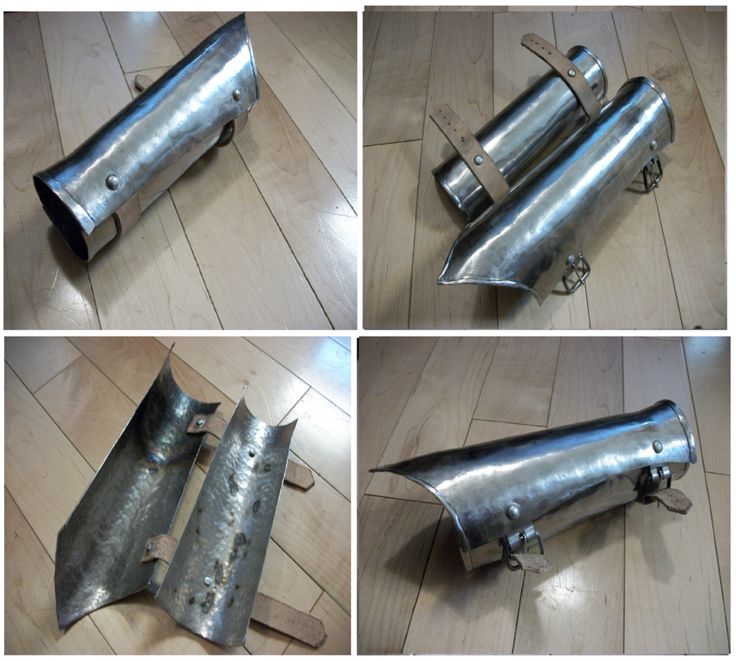

The Legal Bit Rifts®, Megaverse®, and Rifts Books® are registered trademarks owned and licensed by Kevin Siembieda and rifts Books, Inc. © 2002 Kevin Siembieda; © 2002 Palladium Books®, All rights reserved world wide. No part of this work may be reproduced in part or whole, in any form or by any means, without permission from the publisher. All incidents, situations, institutions, governments and people are fictional and any similarity to characters or persons living or dead is strictly coincidental.